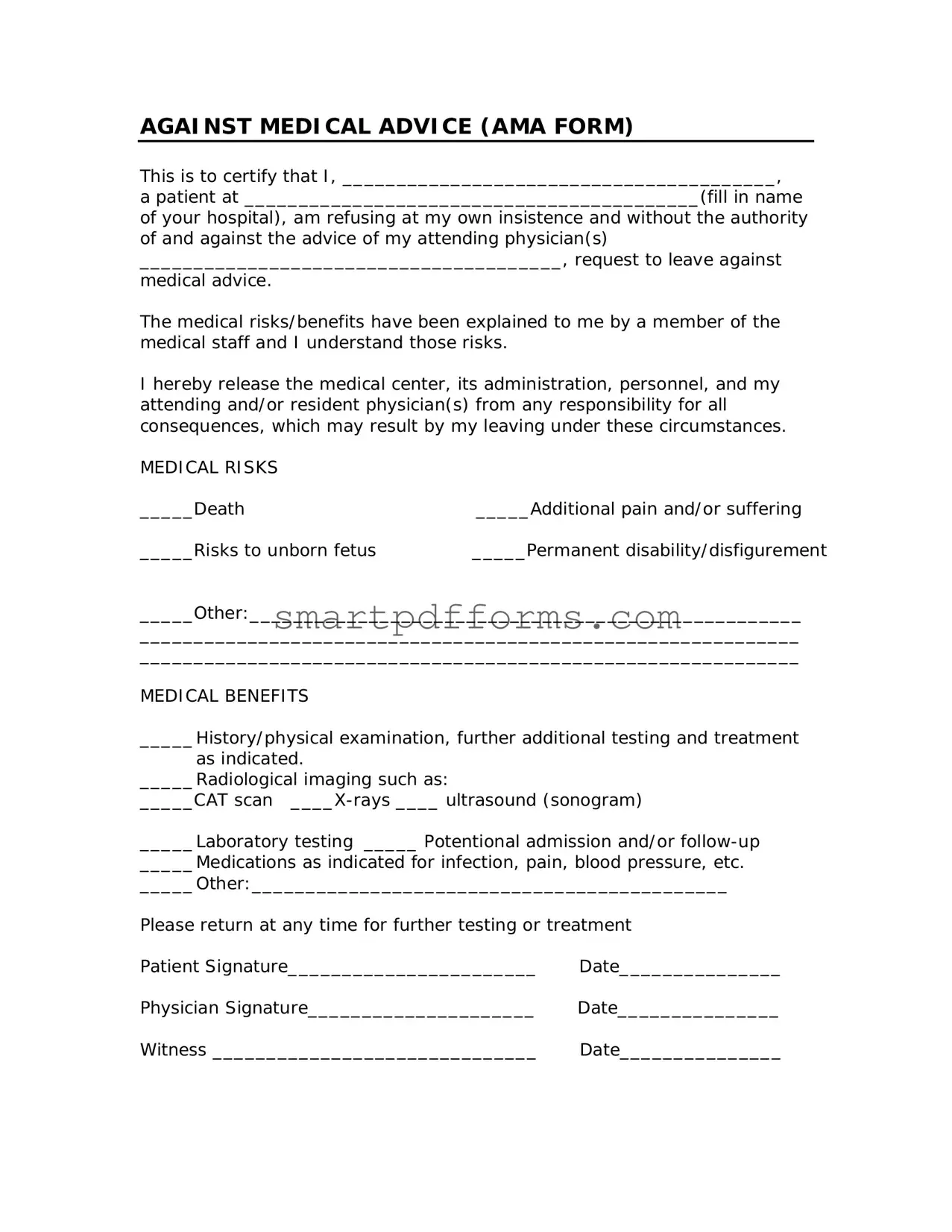AGAINST MEDICAL ADVICE (AMA FORM)
This is to certify that I, ________________________________________,
a patient at __________________________________________(fill in name
of your hospital), am refusing at my own insistence and without the authority of and against the advice of my attending physician(s)
_______________________________________, request to leave against
medical advice.
The medical risks/benefits have been explained to me by a member of the medical staff and I understand those risks.
I hereby release the medical center, its administration, personnel, and my attending and/or resident physician(s) from any responsibility for all consequences, which may result by my leaving under these circumstances.
MEDICAL RISKS |
|
_____Death |
_____Additional pain and/or suffering |
_____Risks to unborn fetus |
_____Permanent disability/disfigurement |
_____Other:___________________________________________________
_____________________________________________________________
_____________________________________________________________
MEDICAL BENEFITS
_____History/physical examination, further additional testing and treatment
as indicated.
_____Radiological imaging such as:
_____CAT scan ____X-rays ____ ultrasound (sonogram)
_____Laboratory testing _____ Potentional admission and/or follow-up
_____Medications as indicated for infection, pain, blood pressure, etc.
_____Other:____________________________________________
Please return at any time for further testing or treatment
Patient Signature_______________________ |
Date_______________ |
Physician Signature_____________________ |
Date_______________ |
Witness ______________________________ |
Date_______________ |

